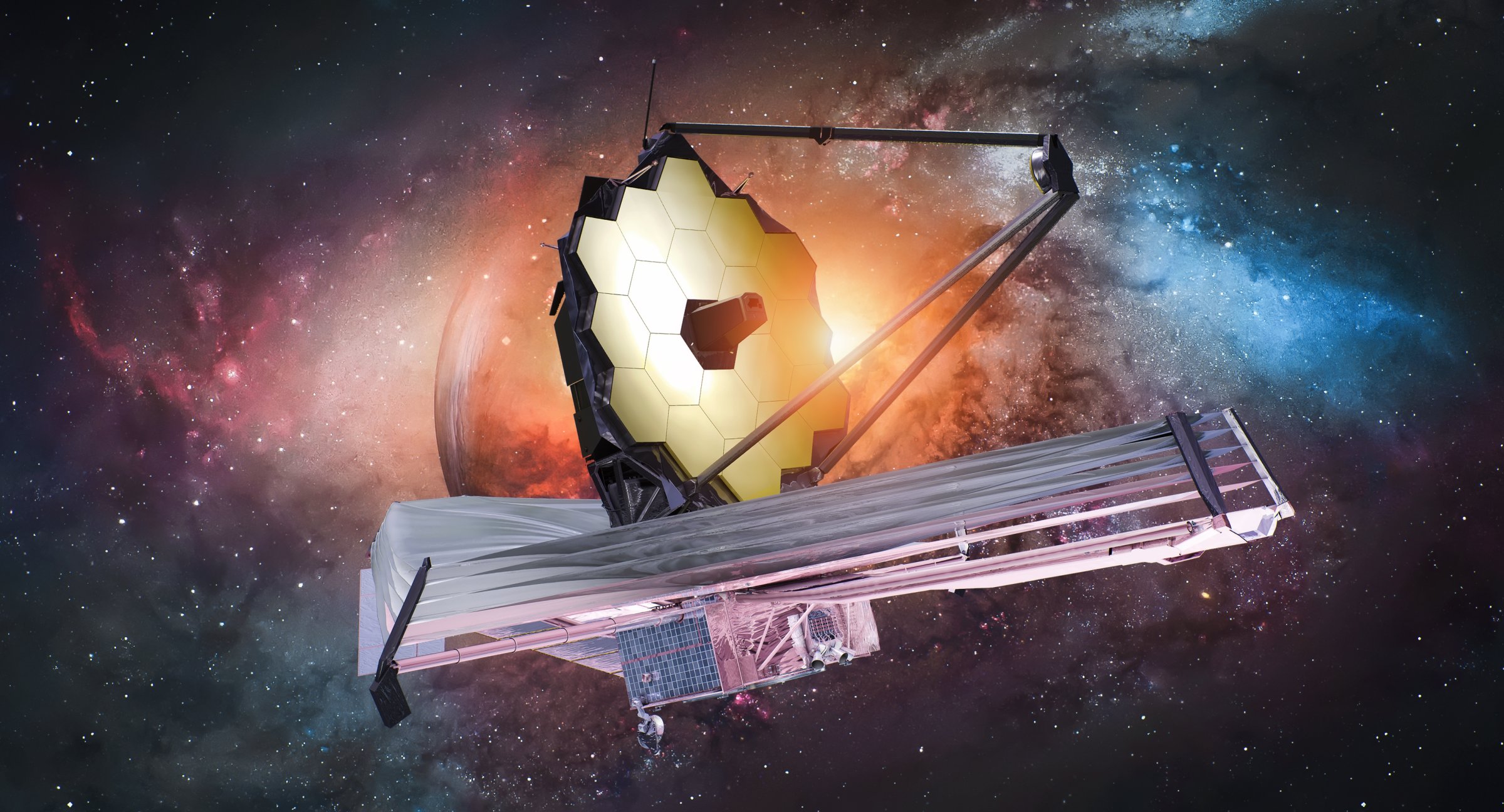
Nobody knows exactly when the 13.8-billion-year-old universe first switched on its stellar lights, but the best guess for the emergence of the earliest stars and galaxies is sometime in the first 400 million years. Determining precisely when in that ancient epoch the great illumination occurred is one of the main goals set for the $10 billion James Webb Space Telescope (JWST), which launched on Dec. 25, 2021 and has been hard at work scanning the heavens since it completed its deployment and its instruments came online in the summer of 2022.
This week, Webb hit paydirt. According to two papers published in the journal Nature, an international team of 80 astronomers from 10 countries has discovered the four oldest galaxies ever observed, including one that dates back to just 320 million years after the Big Bang, when the universe was only 2% of its current age. (Our solar system and the Earth itself are, by contrast, just 4.5 billion years old.)
“To find these galaxies in such stunningly beautiful images is a special experience,” said astronomer and co-author Brant Robertson of the University of California Santa Cruz, in a statement released by the European Space Agency (ESA). “We can be absolutely confident of their fantastic distances.”
The quartet of ancient galaxies were found in a patch of sky known as the Hubble Space Telescope’s (HST) Ultra Deep Field, a relatively small region that is nonetheless home to an estimated 100,000 galaxies. Hubble studied the deep field for more than 20 years, but the telescope was always limited in what it could detect. That’s because HST sees principally in the visible spectrum. It is effectively blind to infrared light—and infrared is crucial to finding especially old galaxies and stars, due to a phenomenon known as redshift.
The farther an object in space is from us, the faster it is moving in the ever-expanding universe. That causes the wavelength of its light to stretch to the red end of the visible spectrum. Light from the most distant objects stretches even further, into the infrared—invisible to Hubble and us, but not to Webb. Over 10 days of observation, the team of astronomers used the Webb’s Near-Infrared Camera (NIRCam) to scan the deep-field region and soon spotted four galaxies whose red-shift indicated they ranged in age from 320 million to 350 million years after the Big Bang, making them the oldest galaxies ever detected. Maybe.
Ancient galaxies are confirmed by more than just their redshift. Their chemistry plays a key role too. In the universe’s earliest epochs, metals and relatively heavy elements like oxygen, carbon, and nitrogen had yet to form, since those are created in the explosions of stars known as supernovas—and those stars had yet to form. The two principal ingredients in the universe’s initial recipe book were ultralight hydrogen and helium. Find a galaxy with an extreme redshift that is also poor in metals and heavy elements, and you’ve truly discovered the genuine ancient article.
To prove their findings, the researchers thus turned to another Webb instrument, the Near Infrared Spectrograph (NIRSpec), to study the galaxies’ chemical fingerprints. After 28 hours of observation over the course of three days, they had their result: the galaxies were indeed made principally of hydrogen and helium, firmly establishing them as the earliest, oldest galaxies ever seen.
“It was crucial to prove that these galaxies do, indeed, inhabit the early universe,” said astronomer and co-author Emma Curtis-Lake of the U.K.’s University of Hertfordshire, in the ESA statement. “Seeing the spectrum revealed as we hoped, confirming these galaxies as being at the true edge of our view…is a tremendously exciting achievement for the mission.”
But just because the four newly discovered galaxies are the oldest ones found to date by no means proves they are the oldest ones period. The same team of researchers has more observing time reserved on Webb and intends to continue searching the Hubble Ultra Deep Field later in 2023, looking for older galaxies still.
“So many questions about galaxies have been waiting for the transformative opportunity of Webb,” said astronomer and co-author Sandro Tacchella from the U.K.’s University of Cambridge, in the statement. “We’re thrilled to be able to play a part in telling this story.”
Correction: The original version of this story misstated the last name of one of the discoverers of the ancient galaxies. It is Robertson, not Robinson.
More Must-Reads from TIME
- Cybersecurity Experts Are Sounding the Alarm on DOGE
- Meet the 2025 Women of the Year
- The Harsh Truth About Disability Inclusion
- Why Do More Young Adults Have Cancer?
- Colman Domingo Leads With Radical Love
- How to Get Better at Doing Things Alone
- Michelle Zauner Stares Down the Darkness
Write to Jeffrey Kluger at jeffrey.kluger@time.com